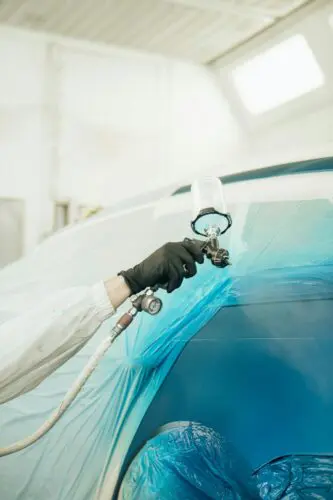How to choose and care for a show-quality paint finish

What defines a show-stopping finish
Stand beside a concours winner in soft morning light and you can read the world in its reflections. A show-quality finish has depth and clarity, with straight reflections that do not wobble across panel edges. Orange peel is minimal and consistent. Metallics lie down evenly without patchiness, pearls flip without blotches, and solid colors glow rather than look chalky. The best resprays also match texture and gloss to neighboring panels so a repaired door does not look fresher than an original quarter. That balance of shine, texture, and color coherence is what separates good from unforgettable.
Color choice plays a role in perception. Dark greens and deep blues amplify panel waviness, while bright reds and yellows shout at small defects. Whites and silvers hide swirls but make metallic orientation and blend edges more critical. If you are restoring a classic, matching the period-correct tone and texture matters as much as the gloss. For modern supercars, a glassy clear with controlled peel often suits the design language best.
Selecting the right system for your project
First decide between single-stage and basecoat plus clearcoat. Single-stage is authentic for many classics and makes solid colors look rich, though it can be less UV stable. Basecoat plus clearcoat dominates modern work since it gives better protection and makes metallic and pearl effects easier to control. If the car lives on the road and not only on a lawn, durability usually nudges you toward a clear-protected system.
Next consider chemistry and compliance. Two-component catalyzed systems cure harder and resist chemicals better than 1K options, which helps on high-speed cars that see heat and brake dust. Waterborne basecoats lay color efficiently and flash quickly with good airflow, then a compatible high-solids clear locks in depth. If you are weighing options, this guide to car paint outlines common systems and uses without forcing you into a single brand.
Preparation makes or breaks the result
Surface correction and panel alignment
Great spraying does not rescue poor metalwork. Correct panel gaps first, then chase dents and high spots until the surface is honest in raking light. Use a guide light low to the floor and move it along the body to reveal waves. Only when the shape is true should filler and glaze enter the picture, and then only as thin corrections rather than sculpting material.
Apply epoxy for adhesion and corrosion resistance, then a high-build primer if you need sanding headroom. Dust on a contrasting guide coat and block in long strokes, crossing your pattern to avoid creating flat spots. Progress grits sensibly, for example P180 to shape, P240 to refine, P400 to prep for base. Walk the car at eye level after each round. Anywhere the guide coat remains is a low and needs more work.
Cleanliness decides how much nibbing and polishing you will do later. Vacuum the booth, blow out seams, then panel wipe until your towels come away clean. Use fresh tack cloths lightly. Aim for stable temperature and humidity so flash times are predictable. Many clears like 20 to 25 degrees Celsius and moderate humidity. Stable conditions help metallics lie evenly and reduce blooming in cold, damp air.
Spraying techniques that separate pros from the rest
Set fan width and fluid on a test panel, then tune air pressure until the pattern is even and the droplets are fine. Typical setups use a 1.2 to 1.3 tip for color and 1.3 to 1.4 for clear, though follow your product sheet. Maintain a consistent 15 to 20 centimeters from the surface with about 70 percent overlap. Move your body, not just your wrist, so you spray perpendicular to each panel and avoid fanning at the ends of a pass.
Keep a steady pace so you never outrun the wet edge. Metallics prefer medium-wet coats with enough flash to avoid lifting. If the flop looks patchy, a controlled drop coat perpendicular to your passes can even the effect. Do test spray-outs for tricky hues and check them under the same lighting the car will live in. Fine-tune reducer choice to the booth temperature to avoid dry spray or runs.
Lay the first clear coat medium-wet for grip, then follow with a full wet coat that just begins to flow. Watch edges and verticals where sags start. If you plan post-cure leveling, add a controlled third coat so you have material to sand without cutting through. Flash times matter here. If you rush, solvents trap and you get dieback later. If you wait too long, you risk texture mismatch between coats.
Curing, polishing, and protection that last
Allow the finish to cure fully before heavy polishing. Forced drying speeds the process, yet many clears continue to harden over several days. Start with denibbing only, then wet sand with 1500 to 3000 grit to level texture where needed. Work methodically with a paint depth gauge. Cutting compound on a firm foam pad restores clarity, a fine polish chases haze, and a clean panel wipe reveals true progress rather than filler oils.
Once the surface is flawless, add protection suited to how the car is used. Quality sealants give slickness with easy upkeep. Ceramic coatings add chemical resistance and longer-beading behavior if applied on a surgically clean surface. Paint protection film makes sense on high-impact zones like the front bumper, bonnet leading edge, and behind wheel arches. On complex curves, a skilled installer prevents lift lines and distortion.
Small chips respond well to careful layering. Clean the crater, apply color in tiny dabs with a microbrush, let it cure, then build until the repair stands slightly proud. After a full cure, level with a small sanding block or a razor wrapped in tape, then polish until the repair disappears into the surrounding gloss. For thin scratches that do not breach clear, a measured polish often spares you from repainting.
On localized damage, blend color inside the panel and fade the clear softly using a blending additive, then reclear to the break line if texture and gloss match. Read the panel under multiple lights before you call it finished. Modern color tools and spectro scans help with tricky hues, yet a physical spray-out next to the car remains the ultimate judge.
Long term, wash with a pH-neutral shampoo, use the two-bucket method, and dry with filtered air or plush towels to keep swirls at bay. Mind wheel cleaners near fresh finishes since aggressive chemistry can spot soft clear. Store the car clean and covered, and those show-morning reflections will keep telling a sharp, beautiful story.
Read more on
MyCarHeaven are on Instagram. Go check us out and do follow us.
Go visit the MyCarHeaven Instagram page. We post regular quality content, predominantly focused on classic cars, supercars, hypercars and car shows. We also feature all our competitions here, where you will have the chance IF YOU FOLLOW US and you follow the competition entry criteria, you could be in with a chance of winning tickets to the best UK car shows, and other automotive stuff.
Go to the MyCarHeaven Instagram account here. Advertisement
Advertisement Advertisement
Advertisement Advertisement
Advertisement Advertisement
Advertisement




